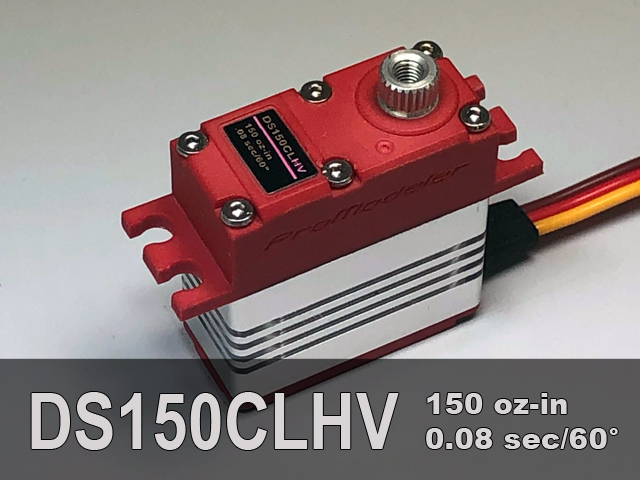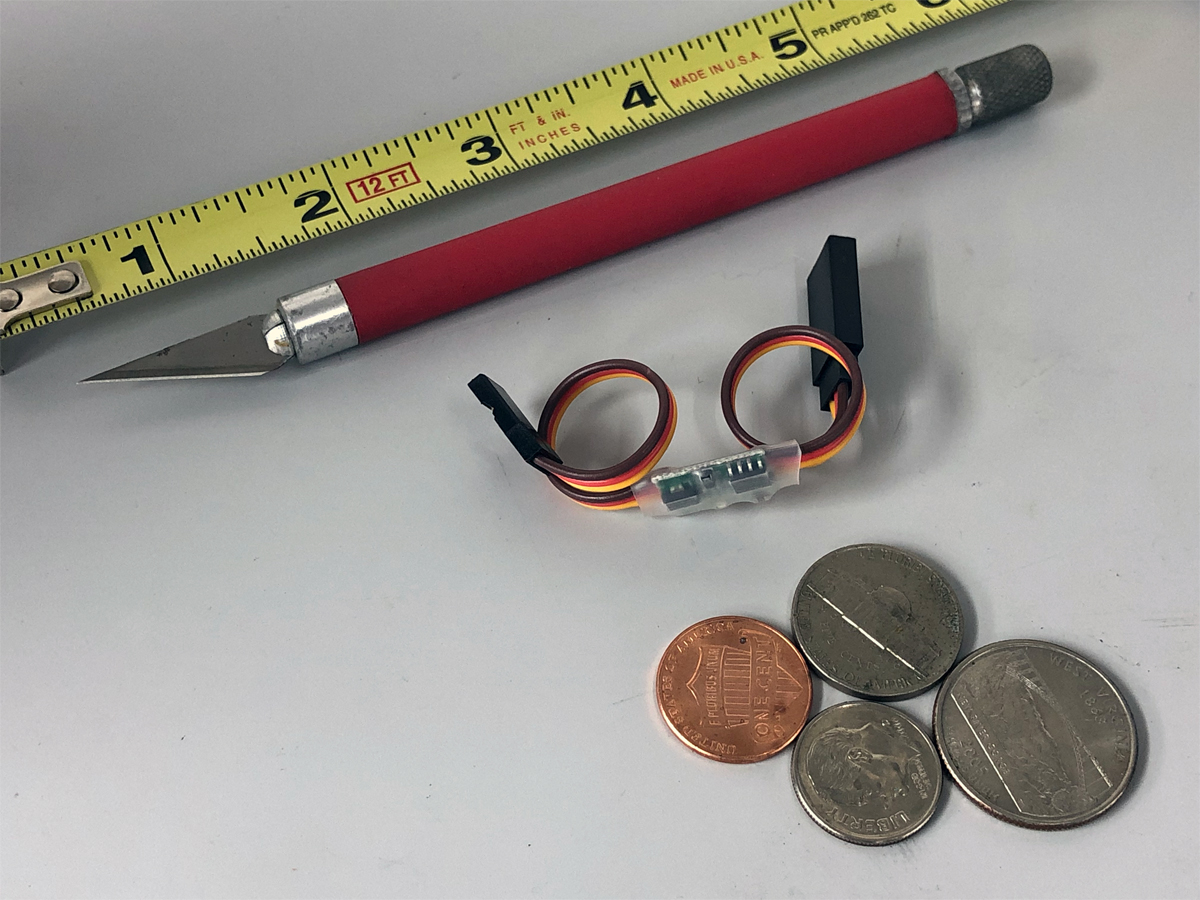Announcement
Collapse
No announcement yet.
Official Freewing MiG-29 Fulcrum Twin 80mm Thread
Collapse
X
-
IMO this is the real issue. Forward CG on a heavy and fast airplane that requires constant trim pressure from cheap MICRO servos that gets worse with flaps down. IMO Servos can not handle the load required and fail allowing the jet to pitch down.Originally posted by janmb View PostLooking at this flexing makes me feel like stressing an aspect that has somewhat been tuned out of the discussion: CG CG CG CG!
If we can conclude that the elevator setup in general is marginal (regardless of why really), good CG becomes more important than ever. This is a heavy bird, far more so than most foamies most of the customers have operated before. The loads on FFS elevators in this weight class are quite a lot higher than we are used to with foamies. A good CG not only makes the model feel a lot lighter and more willing to accept pilot commands, but also greatly reduces stress on the whole elevator setup.
Get your CG right!
I would go so far as to claim flying this model on any CG less than 15 mm aft of the CG marks should be considered unsafe. The model is perfectly stable and benign at +15
Comment
-
But is the flexing the cause of the crashes, or just another symptom of the excessive loads on the stab that the servos can't handle over an extended period of time?Originally posted by Evan D View PostFrom my Oct 29 post on RCG...
"If you have the MiG go push down on the outer part of the stab... Mine has a significant amount of (easy to do) flex... In both directions.".
If the flexing causes the loss of control then putting in stronger servos is not going to cure that. Stiffening the structure would be the solution.
- Likes 1
Comment
-
Rudy, X-10 is the gunmetal color of the shrouds just forward of the afterburner nozzles. I got that one and it is a perfect match.Originally posted by RudyD54 View PostTamiya Gunmetal X-10 is an exact match for the nozzles.
I am looking for the color of the turkey feather afterburner nozzles just aft of the gunmetal X-10 color.
Thanks
Comment
-
Ah got it. 🤔 let me check the metallics I’ve got here and see if any of them match and I’ll get back to you a little later.
Originally posted by viper1gj View Post
Rudy, X-10 is the gunmetal color of the shrouds just forward of the afterburner nozzles. I got that one and it is a perfect match.
I am looking for the color of the turkey feather afterburner nozzles just aft of the gunmetal X-10 color.
Thanks
Comment
-
I installed the 150s in my plane. Haven’t flown yet, but they seem very strong even on 5V. Direct drop in. The servo wire is thick (20 - 22 gauge) and quite long, so you can install shorter extensions. I believe this servo is a good investment, to have down the road for any jet.Originally posted by GliderGuy View Post
I did not reverse mine. If you have enough channels, I would recommend plugging the elevators in separate channels. You can setup tailerons down the road, and have better controls of individual surfaces (subtrimming and travels). Also, in terms of power delivery, 2 connectors are better than one. Lots of advantages.
Comment
-
Agree with Kallend and Henrik... looks like some structural reinforcement is in order.
Easiest way would be to glue vertical stabs in as Henrik suggested to increase cross section to deal with torsional loads... but you won't be able to dismount the fins, which is a pitty :'(
Otherwise... there are a few options (GF laminate, sandwiching with plywood sheets...) but will take more effort and require repaint.
Don't use a servo reverser, set up tailerons instead, which should be manufacturer recommended policy anyway IMO.Originally posted by GliderGuy View PostPlease offer opinions on the following two (2) products:
[...]
Servo reverser vs a hand rewire solder job...a reverse servo is not sold:
https://www.promodeler.com/PDRS-reverser
This jet is meant and designed to operate with tailerons.
And I've had servo reversers fail me in the past, I don't trust them.
Comment
-
Spektrum specifically advises against servo reversers on flight control channels. Apparently the cheap ones are prone to drift, and poor control of the pulse parameters.Originally posted by Airguardian View PostAgree with Kallend and Henrik... looks like some structural reinforcement is in order.
Easiest way would be to glue vertical stabs in as Henrik suggested to increase cross section to deal with torsional loads... but you won't be able to dismount the fins, which is a pitty :'(
Otherwise... there are a few options (GF laminate, sandwiching with plywood sheets...) but will take more effort and require repaint.
Don't use a servo reverser, set up tailerons instead, which should be manufacturer recommended policy anyway IMO.
This jet is meant and designed to operate with tailerons.
And I've had servo reversers fail me in the past, I don't trust them.
Comment
-
I am not surprised to see the anhederal. As the wing on an airplane creates positive lift the stabilizer is creating negative lift or down force, like an upside down wing.Originally posted by Borat View PostI mentioned about a week ago about a problem with the MiG. During flight condition with flaps deployed and higher throttle settings, with nose down attitude, the MiG loses elevator control. Please see my previous posts. I was able to reproduce the pitch control instability multiple times. Last Sunday, I had someone take close up burst photos during this maneuver. Unfortunately during my last try, I was not able to pull out of the shallow dive with up elevator input on my transmitter. The MiG was destroyed on impact. I have a picture, moments before impact, that demonstrates a structural problem with this plane. See below. Please note the anhedral configuration of the horizontal stabs. I’m convinced that this is contributing to the loss of elevator control. My advice, please do not fly your MiG with flaps deployed at higher throttle settings
I am NOT an aero guy at all but I have worked on several initial UAV flight test programs as a pilot/technician and I listen closely to what engineers discuss during the initial phases of testing.
This pitch issue looks like something I've run into in the past. We were losing control of an aircraft, always pitching down, in certain flight conditions. We also initially thought it was a servo force issue. We went from Moog to Litton servos, almost tripling our torque to the horizontal stab, which in this case was a full flying stabilizer. The aero engineers had preformed a load study saying the Moog servos offered more than enough output to control the surface under any "standard" flight mode.
Even with the improved servos we lost control of pitch usually when turning base to final with flaps deployed OR other flight regimes requiring a lot of up elevator travel. Our field fix was to operate without flaps and no pitch diversions requiring large amounts of elevator movement.
I wish I still had the data but what was discovered and then verified, using the wind tunnel at Langley Va, was the full flying horizontal stabilizer was stalling. In our case this always caused the nose of the aircraft to pitch down, the more elevator input you applied the more it would pitch down. IF we has sufficient altitude relaxing the elevator to neutral would always put us back to stable flight. I remember it did not feel natural to stop commanding up elevator input to recover from a relatively steep descent. The aero guys said the tail plane was in a deep stall.
As I recall our "Fix" was to limit stabilizer travel limit flap deployment and I think we also installed some fences to the leading edge of the stabilizer. The real fix was the Rev 2 bird had a conventional horizontal tail configuration.
- Likes 2
Comment
-
Here is some data to support my theory that the micro full flying stab (FFS) servos are not up to the task on this model.
I’m no engineer, I flunked higher engineering math in the first year college and switched majors to something I could do. But I’ve flown RC airplanes for 55 years, turbines jets for 20 years and have built and flown several scratch built turbine jets. Nothing special about that, but I have used the AMA Large Model Aircraft (LMA) guidelines for years with good success.
With that said I decided to check the Mig-29 stabs against the AMA FFS guidelines that recommend the stab pivot point be ahead of 25% MAC point from 2-4%. This would put the recommended pivot point on a FFS at 23-21% MAC. I used the diagram and calculation procedure in the AMA LMA document.
I drew out the Mig stab outline and found the MAC , actual pivot point, and recommended pivot points. What I found was that the pivot point on the Mig stabs was at 15% MAC, way forward of the recommended 23-21%. Not to say this won’t work, it would just need more servo power to move the stab than one with the pivot at 23-21%
Next I did the servo torque calculations that are used to get a LTMA certification on a scratch built jet with FFS. Table 1 shows the airspeed factor that is applied to the calculation. Granted, these factors are for LMA but they are available and tested. The lowest number that could be applied to the Mig-29 is 3.0 or maybe 1.75 if you just cruised around level. Either way the servo torque required numbers are way higher than those supplied with the Mig-29.
Now in my opinion you add this info to the fact that the Mig-29 stabs have a pivot point at 15% MAC which makes the servo torque requirements higher. Add into that several other factors mentioned it the thread and it makes the problem worse. The jets are very nose heavy at the factory CG (or even 15mm aft of that), have rubber bands for stock pushrods, stab mounts in a small foam section on the tails that may flex, upgraded servos that only produce 47 in/oz, flap deployment produces a pitch down which requires more constant power from servo to compensate, and you have a recipe for failure in several modes, electronic, structural, linkage, etc. I think the airframe will be just fine with some easy mods but not with just the stock setup.5 Photos
- Likes 2
Comment










Comment